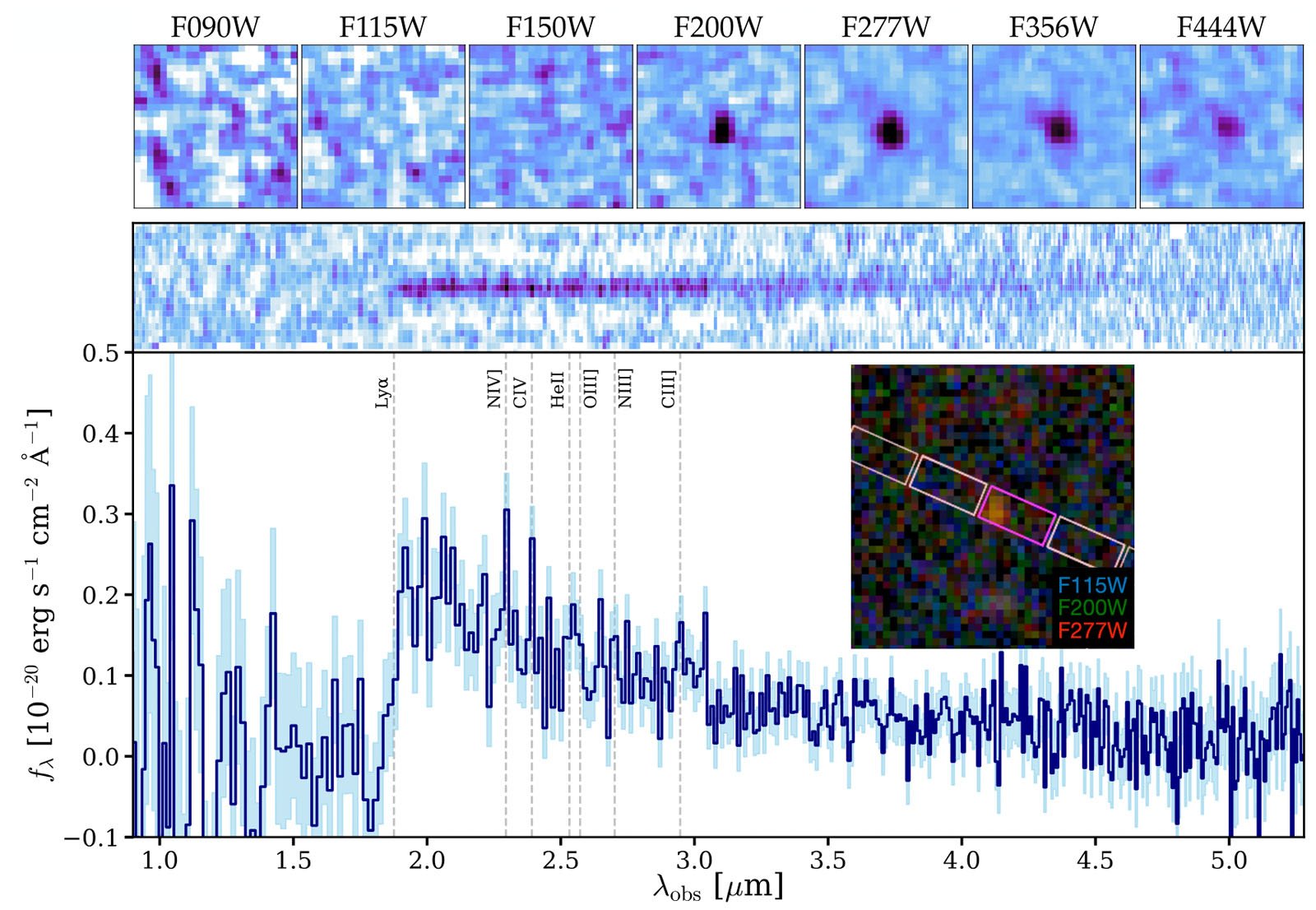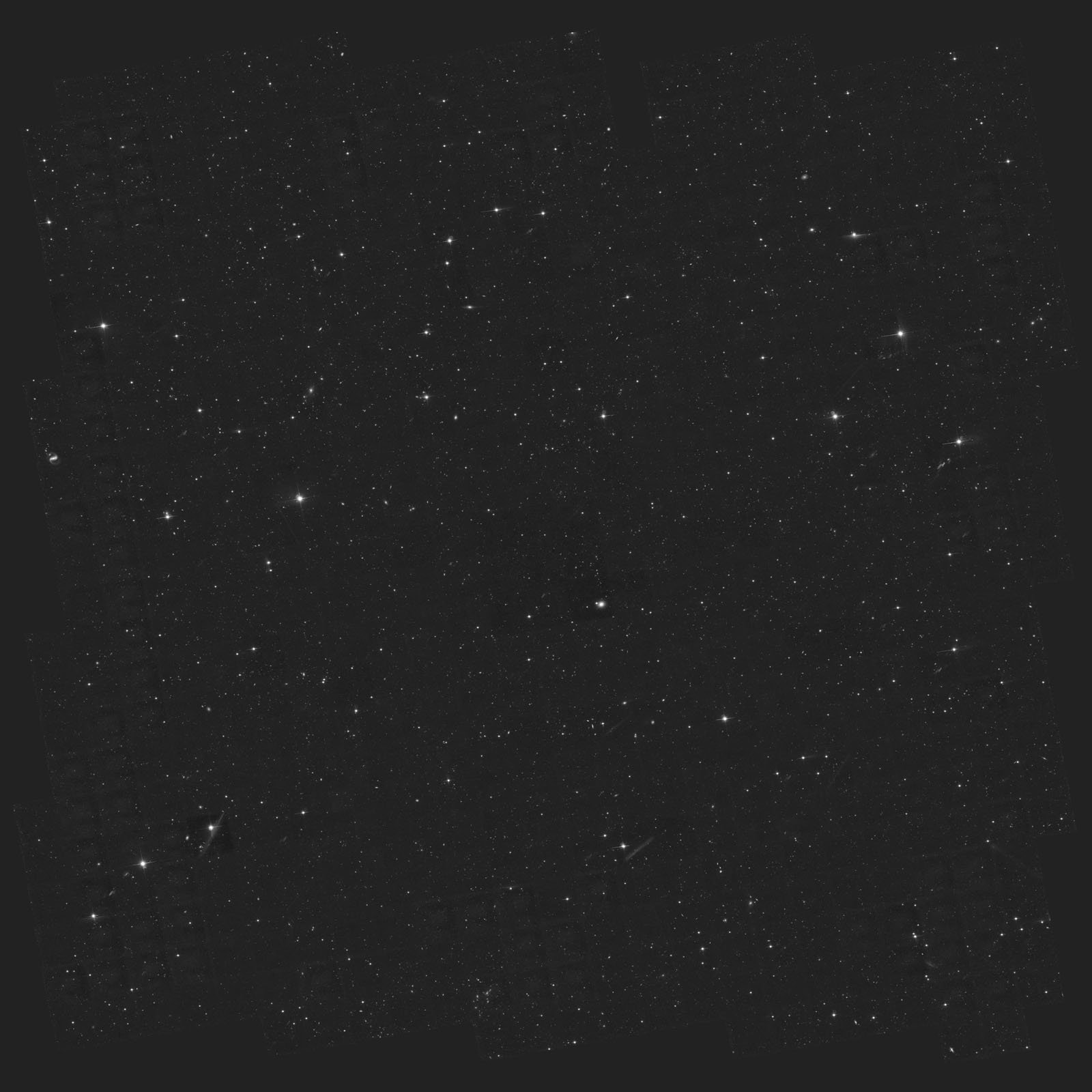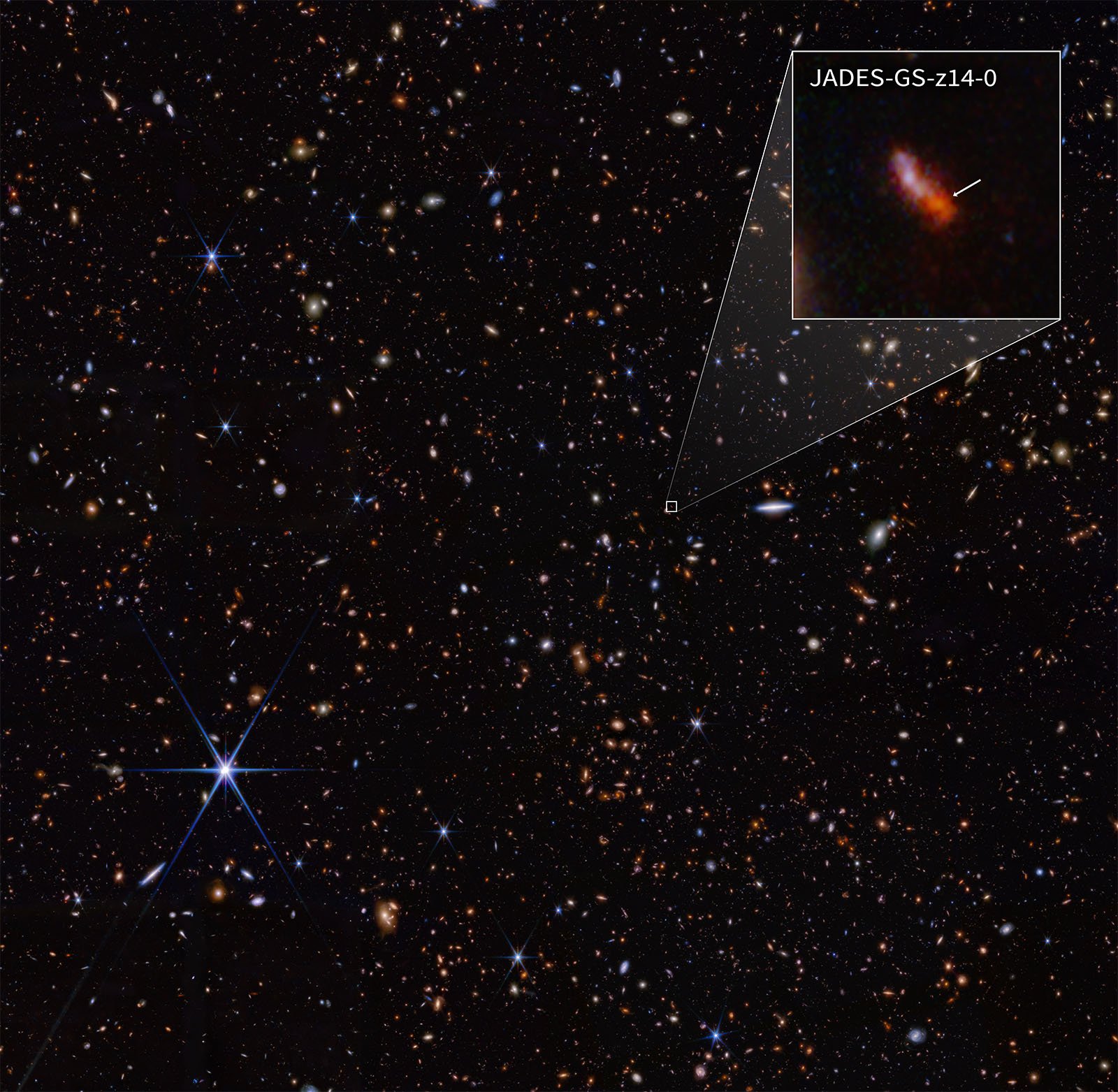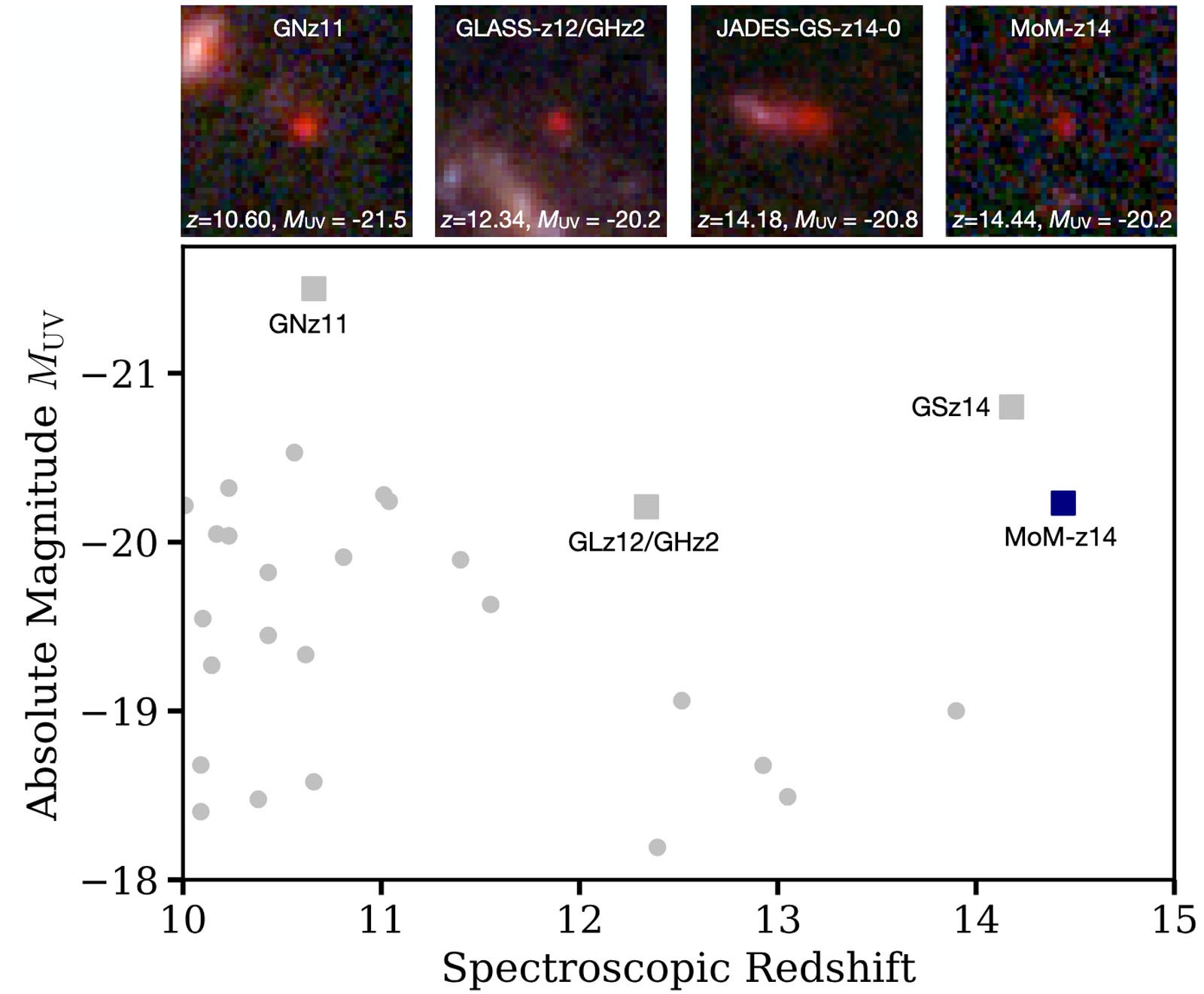The Oldest, Most Distant Galaxy Ever Photographed Is 13.5 Billion Years Old
![]()
The James Webb Space Telescope (JWST) has achieved another record. Scientists using the groundbreaking telescope have detected light from an ancient galaxy, MoM-z14, just 280 million years following the Big Bang. It is the most distant, oldest galaxy ever photographed, and its very existence is puzzling.
Admittedly, the galaxy does not look like much. It’s small and pixelated. However, its detection is a remarkable scientific and technological achievement that has expanded humanity’s reach ever further into the cosmos and the earliest age of the Universe.
Webb is not the first space telescope that could look into the very distant past. However, it is one thing to sense light from a super-old, super-far galaxy, and it is another thing entirely to prove that it is, in fact, a galaxy and determine precisely how old it is. This requires precise spectral analysis that Webb is uniquely able to perform thanks to its various imaging instruments, including its Near-Infrared Camera (NIRCam) and Near-Infrared Spectrograph (NIRSpec). By splitting light from cosmic objects into disparate wavelengths, scientists can learn vital information about that object’s chemical composition and then calculate its distance based on how different wavelengths of light have shifted. As NASA explains, when space expands, light is stretched. And when light stretches, it shifts more toward red light.

In less than three years, the James Webb Space Telescope has entirely replaced the list of the 10 oldest known galaxies, primarily through the Cosmic Evolution Survey (COSMOS Survey) project. This incredible survey, performed by the Hubble Space Telescope, required nearly 1,000 hours of observation and is a composite of 575 separate images captured by Hubble’s Advanced Camera for Surveys’ (ACS) Wide Field Camera. A full-resolution version of this image would be a whopping 100,800 by 100,800 pixels or 10.16 gigapixels.

Within this massive image, scientists have identified many possible ultra-distant galaxies, and telescopes both on Earth and in space study them. Thanks to its impressive capabilities, JWST is especially good at this task. Just a year ago, Webb observed JADES-GS-z14-0, then the oldest known galaxy that was observed just 290 million years after the Big Bang.

JADES-GS-z14-0 did not hold its record for all that long. MoM-z14 is older and more distant than JADES-GS-z14-0 above, although not by much. However, another 10 million years is an awful lot when at the cutting edge of cosmic discovery.
MoM-z14 is part of the “Mirage or Miracle” survey. And despite how far MoM-z14 is away and how small it is on Webb’s sophisticated image sensors, scientists can learn a surprising amount about the galaxy.
The light from the galaxy traveled about 13.53 billion years to reach Webb, and given the understood rate of cosmic expansion, that means it is now 33.8 billion light-years away. Scientists have determined the galaxy is less than 500 light-years in diameter, much smaller than the Milky Way galaxy (105,700 light-years). Scientists have also determined that MoM-z14 is a highly concentrated galaxy with minimal dust. Further, the scientists infer that MoM-z14 is a “relatively low-res galaxy, comparable to the present-day Small Magellanic Cloud.” Granted, the SMC has a diameter of around 7,000 light-years.

What’s puzzling about MoM-z14 and some other recently discovered ancient galaxies is that not only are there more of them than expected, the relative lack of neutral gas is confusing. Scientists previously didn’t think the Universe should have reionized as early as galaxies like MoM-z14 suggest it did. There is also the unexplained star formation. Could exotic, mysterious forms of energy — like dark matter or dark energy — be involved? Maybe. There are many new questions thanks to discoveries like those of JADES-GS-z14-0 and MoM-z14.
“That the number density of luminous galaxies evolves only gradually between z ≈ 10 and z ≈ 14 is now on firm spectroscopic footing,” the researchers conclude. “The good fortune of inhabiting a Universe teeming with GN-z11s means remarkably humous z ≈ 15 galaxies in the hundreds may be within the grasp of the Roman Space Telescope. JWST itself appears poised to drive a series of great expansions of the cosmic frontier — previously unimaginable redshifts, approaching the era of the very first stars, no longer seems far away.”
The James Webb Space Telescope and other new telescopes push the boundary of human exploration and understanding farther than ever before. What was impossible to see and photograph only a few years ago is no longer so.
Image credits: ‘A Cosmic Miracle: A Remarkably Luminous Galaxy at Confirmed with JWST’ by Rohan P. Naidu et al., Open Journal of Astrophysics (submitted)/arXiv:2505.11263, 2025